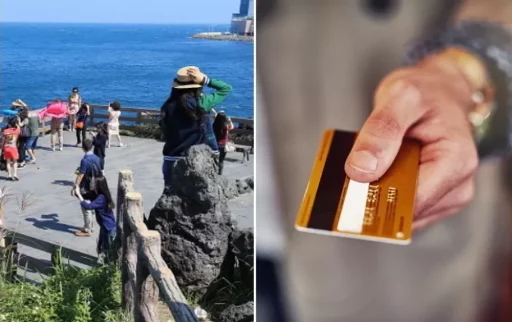Travelers Turning Their Attention Overseas Rather Than Domestically
As the number of overseas travelers increases, it has been confirmed that the number of domestic travelers is decreasing. In the first quarter of this year, domestic tourism expenditure by nationals has decreased for two consecutive years.
There are voices suggesting that the domestic tourism industry is shrinking.
According to the Korea Tourism Organization on the 8th, domestic tourism expenditure by nationals in the first quarter of this year was 9.939 trillion won, down 5.1% from the same period last year (9.579 trillion won). The situation shows a downward trend for two consecutive years, as it continues to decrease compared to the previous year in 2023.

Among domestic regions, Jeju Island has shown the largest decline. The expenditure of domestic tourists visiting Jeju in the first quarter was 175.4 billion won, a sharp drop of 19.0% compared to the same period last year (216.5 billion won).
According to the Jeju Tourism Organization, the number of domestic tourists visiting Jeju last year was 11.88 million, a decrease of 6.4% from the previous year (12.68 million). By February of this year, the number had also declined by 14.9% from the same period last year, totaling 1.58 million.

The decline is also evident in the Seoul metropolitan area and major tourist sites. The tourism expenditure in the Seoul region was 2.717 trillion won, down 5.0% compared to the same period last year (2.8604 trillion won).
Gangwon Province saw a decrease of 4.7% (261.2 billion won), and Busan decreased by 0.4% (759.8 billion won).
On the other hand, while domestic spending is decreasing, spending by foreign tourists is on the rise.
In the first quarter of this year, tourism expenditure by foreigners in Korea reached 1.8769 trillion won, an increase of 10.6% compared to the same period last year (1.6970 trillion won). As of February this year, the number of arrivals totaled 2.2556 million, an increase of 18.0% compared to last year.
Causes of Decreased Domestic Tourism Demand
The reasons for the decline in domestic tourism demand include the 'three highs' phenomenon of high prices, high interest rates, and high exchange rates, as well as social instability factors.
Analysis suggests that the 'Jeju Air passenger plane accident' and 'controversy over martial law,' as well as recent large wildfires in the Yeongnam area, which led to the cancellation or postponement of more than ten festivals, have dampened tourism sentiment.

However, experts point out that while tourism demand has increased abroad during the same period, it is not solely due to economic conditions.
They diagnose that structural factors, such as the weakening competitiveness of domestic tourism content, a lack of satisfaction relative to prices, and issues with transportation and accessibility, are complexly influencing domestic tourism demand.
As of February this year, 5.598 million nationals chose overseas travel, an increase of 6.0% compared to the same period last year (5.283 million). Additionally, overseas tourism expenditure rose by approximately 4.956 billion dollars (about 7.035 trillion won), representing a growth of 7.6%.
Image Source: Reference photos for understanding the article / gettyimagesbank


